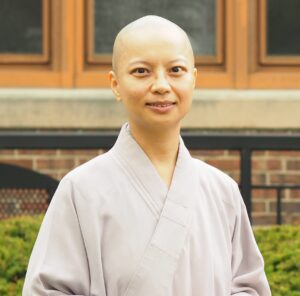mindfulness
Select an item by clicking its checkbox
One of my courses is a first-year tutorial designed to fit in with the college-wide objectives to develop new students’ basic academic skills, including writing, critical reading, and oral communication. It also involves individually advising new students to navigate their learning journey until they declare their major field of study. ...
One of the cruel ironies of teaching in Atlanta is that the so-called fall semester always begins in the damp-flames-of-hell climate that is August in Georgia. But this morning, as I sit with my coffee on my back porch, I recognize the halting, modest signs that a proper fall may ...
I distinctly remember what my husband said when he found me typing an email to a student in the middle of the night, the glow of my laptop illuminating my face in the darkness: “You need to set better boundaries.” Suffering from insomnia–whether it was in the late stages ...
I distinctly remember what my husband said when he found me typing an email to a student in the middle of the night, the glow of my laptop illuminating my face in the darkness: “You need to set better boundaries.” Suffering from insomnia–whether it was in the late stages ...

Integrating Mindfulness into Anti-Oppression Pedagogy: Social Justice in Higher Education
Date Reviewed: April 15, 2016
In the classroom, faculty often rely on a singular way of knowing -- allowing minds to enter the classroom while leaving bodies, spirits, emotions, and experiences outside the doors of the lecture hall or meeting space. Professor of ethnic and women’s studies at St. Cloud State University, Beth Berila imagines something more effective and embodied. After receiving tenure, she enrolled in a yoga teacher training program. She realized the contemplative practices of yoga and meditation could better her teaching, particularly in the area of social justice. Mindfulness could create a space for interrupting oppression and begin “the dynamic process of unlearning” that which may contribute to oppression (x). In each of seven chapters, Berila presents a theoretical framework, reflection and application for classroom learning, practices to cultivate mindfulness, and extensive bibliographic references.
Berila’s project aims to recognize oppression and unlearn its destructive internalization for both the oppressed and the oppressor. Mindfulness, Berila argues, can dismantle privilege as well as dislodge internalized oppression. The practices she incorporates into her teaching prompts readers to reflect on their own educational techniques as potentially contemplative and communal spaces for learning. She offers introspective activities like pranayama (a form of breathing), journaling, and mindful awareness of the body. She also offers corporate activities that invite interaction and group discussion. Through both the introverted and extroverted approaches she acknowledges the possibility of triggering dissonance, trauma, and resistance. Berila is a skilled teacher and astute author; she knows well the risk and rewards of the activities she engages. The practices she advocates are new, thought-provoking, and stimulating.
Berila is not unaware of the critiques that can be made of pedagogy shaped by mindfulness. She addresses particular concerns directly and then nudges the critics to consider the positive benefits of this method: building empowered communities, fostering compassion, changing oppressive systems, claiming full human dignity and equality for all people, and prompting institutional change. Accomplishing this requires attention to the knee-jerk reaction of shenpa, the Buddhist term for “the negative gut reaction” (109) behind our charged reactions. Disrupting that shenpa is one of the aims of mindfulness and here Berila offers techniques for navigating the complexity of reactions that can occur within individuals and classrooms when that charge occurs.
Integrating Mindfulness into Anti-Oppression Pedagogy would be great summer or sabbatical reading when time allows deep contemplation. Her work invites reflection on those moments we wish we had handled differently in the classroom while offering helpful steps forward for future instruction. While integrating mindfulness does not require a teacher to be a master practitioner, Berila prompts small steps we can all take toward integrating body and spirit, emotion and experience into a deeper embodiment that moves beyond our mechanized minds. Plan to read this fascinating book twice. Once in a time and space where you can “pause and breathe” (29), allowing the content to become embodied. And then second, with pen in hand and syllabus in the other, ready to take note of how to incorporate these practices into your next semester of teaching.


